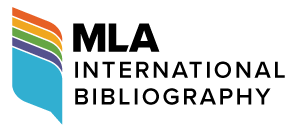A Book on the Making of Lonesome Dove. John Spong. Austin: University of Texas Press, 2012 (168 pages). ISBN: 9780292735842.
Matthew Carter
The Western is surely one of the most enduring and characteristically American genres. Its exponents in cinema have included such distinguished filmmakers as John Ford, Howard Hawks, Budd Boetticher, Sam Peckinpah and Clint Eastwood. Originating in William “Buffalo Bill” Cody’s “Wild West Show” and the dime novels of the nineteenth century, and accorded greater cultural status by novels such as Owen Wister’s The Virginian: A Horseman of the Plains(1902) and Zane Grey’s Riders of the Purple Sage (1912), the Western has continued to stimulate literary output, inspiring writers as diverse as Louis L’Amour, John Seelye and E. L. Doctorow. While Ford would have to be regarded as the genre’s foremost cinematic specialist—at least in its classical Hollywood formation—perhaps Larry McMurtry deserves to be ranked as the leading contemporary exponent of the Western in U.S. literature. His novels Lonesome Dove (1985), Streets of Laredo (1993), Dead Man’s Walk (1995) and Comanche Moon (1997) have married the traditional populism of the genre to a revisionist history of the American West.
Before Lonesome Dove, McMurtry had found some success through a number of contemporary-set stories that highlight the frontier as a concept as much as a historical phenomenon. Horseman, Pass By (1961), his debut novel, was followed by Leaving Cheyenne (1963) and The Last Picture Show (1966). The first and last of these were made into successful Hollywood movies—Horseman, Pass By being retitled Hud (Martin Ritt, 1963), and starring Paul Newman. McMurtry’s fictions are unmistakably postmodern in their self-conscious irony and use of pastiche that implicitly contradicts the notion of grand narratives; specifically the grand narrative of the American frontier, or the myth of the West. This postmodernisation of the myth was extended with some success in his more recent series entitled the Berrybender Narratives: Sin Killer (2002), The Wandering Hill (2003), By Sorrow’s River (2003) and Folly and Glory (2004). But it remains the Pulitzer Prize–winning Lonesome Dove for which he is most highly regarded. Within a few years of its publication, Lonesome Dove was adapted by CBS for television as a miniseries. It drew an estimated 26 million viewers upon its original broadcast in February 1989 and proved to be a major critical success, receiving eighteen Emmy nominations (winning seven) as well as Golden Globe awards for Best Miniseries and Best Actor (for lead star Robert Duvall). The fact that it boasted an all-star cast including Tommy Lee Jones, Anjelica Huston, Diane Lane, Frederic Forrest and Danny Glover makes the miniseries an important early forerunner of the current spate of high-quality television dramas starring established film actors and Oscar winners. If we are currently witnessing the Golden Age of television drama, then Lonesome Dove was surely a worthy progenitor, a production that carries cultural currency independent of McMurtry’s novel. The novel and miniseries form the subject matter of John Spong’s A Book on the Making of Lonesome Dove.
Designed as a companion piece for Lonesome Dove screenwriter and executive producer William “Bill” Wittliff’s fine-art volume, A Book of Photographs from Lonesome Dove(2007), Spong’s book is heavily illustrated with colour plates by photographer Jeff Wilson, whose subject matter encompasses props, costumes, set designs and annotated scripts. It also benefits from the addition of numerous continuity Polaroids used during filming as well as several on-set photographs taken by Wittliff himself. In producing the book’s commentary, Spong has assembled and edited interviews that he conducted with forty key figures involved with both the novel and miniseries. Extensive commentary by McMurtry himself is accompanied by the thoughts and insights of Wittliff, coexecutive producer Suzanne de Passe, producer Dyson Lovell, cinematographer Doug Milsome, director Simon Wincer and the entire main cast. Amidst all the usual anecdotes, reminiscences and accounts of on-set altercations that will surely entertain fans, Spong’s interviews occasionally deliver some truly valuable tidbits of information. For instance, one is struck by how transnational the miniseries’ production team actually was: a Zimbabwean producer in Lovell, an English cinematographer in Milsome and an Australian director in Wincer—a team that, as Spong suggests, seemed “counterintuitive for an American western” (65), let alone a Western as big and “sacred” (65) to so many readers as Lonesome Dove. Wincer admits candidly that “every director in America wanted that job. I felt half of Texas was looking over my shoulder at this Australian proposing to film ‘our Bible’” (66). Milsome thinks that the transnational nature of the principal crew actually helped with delivering on the authenticity of the narrative, particularly the scenes involving Gus and Call’s cattle drive to Montana: “I think having an Englishman on camera and an Australian as director gave it a certain flavor of seeing the West for the first time, rather like Gus and Call, who were seeing this part of America for the first time” (66).
Combined with the abundance of photographs, stills and plates, the interviews illuminate enough about the fictional world of Lonesome Dove (both the novel and the miniseries) that they would surely be appreciated even by those with only a passing interest in either. Given that this book is clearly aimed towards fans rather than scholars—an illustrated coffee-table volume and behind-the-scenes account, rather than an in-depth theoretical study—it must be said that some of the contributors seem rather misplaced. I am thinking of, for instance, Richard Slotkin, whose undoubted value as a cultural historian of the American West and its frontier mythology is not sufficiently exploited by Spong; there is nothing of his influential ideas from Regeneration Through Violence:The Mythology of the American Frontier, 1600–1860(1973)or Gunfighter Nation: The Myth of the Frontier in Twentieth-Century America(1992), merely two rather superficial statements on pages 45 and 47 about the Westerner being distinct from the Eastern “dude” and a relic of a former age. Despite this criticism, Spong has largely achieved an effective balance with his choice of contributors. The interviews may seem somewhat erratic at first, but by around page 42—when the discussion segues from the novel to the miniseries (where the heart of the book really lies)—they display a documentary-like flow and harmony with the accompanying photographs and plates.
This is not to say that Spong downplays the novel’s significance. On the contrary, he devotes the first third of his book to discussing the history and cultural impact of the novel, which has sold over two and a half million copies. For Spong, it is the novel’s sense of “fundamental contradiction” (21) that accounts for its success, that element which “distinguishes it from mere entertainment … It’s at once a celebration and a critique of the myth of the Texas cowboy” (21)—and furthermore, we may surmise, of the myth of the West and thus the Western genre itself. According to one contributor, New Republic literary editor Leon Wieseltier, McMurtry is the “very antithesis of the awful Liberty Valance rule: He prefers printing the truth to printing the legend. He’s a born demythologizer. But he stays with the places and the people that he has unsentimentally demythologized. He doesn’t do it out of contempt” (32).
Within postmodern American fiction, the other most remarkable revisioning of the Western genre occurs in the oeuvre of Cormac McCarthy. If McMurtry’s early works directly engaged with the collision of urban technological modernity and the values and conditions of old, rural Texas, then McCarthy portrays the myth as a romantic delusion possessing destructive power for contemporary Americans in terms that are too intensely serious to be regarded as pastiche. His Border Trilogy—All the Pretty Horses (1992), The Crossing (1994), Cities of the Plain (1998)—has generated considerable critical analysis, which is not to say that McCarthy is necessarily preferred as a writer who disabuses us of the myth’s penetrating cultural power; at least, not by one of Spong’s contributors, the art critic (and long-time friend of McMurtry’s) Dave Hickey. “Professors ignore Larry because you can’t teach seamless talent”, states Hickey, “McCarthy’s writing, on the other hand, is house proud. It’s a collage of antique and modern prose, chock-full of tropes and maneuvers—pure professor bait. They’re also drawn to his unrelenting pessimism” (53). Hickey goes on to argue that “[t]here’s a Calvinist rhythm to [McCarthy’s writing], and a vision of the omniscience of evil that is so profound as to encourage complacency … That’s not good storytelling” (53). To say that I find this reading a little harsh would be an understatement. According to McCarthy scholar John Cant, good storytelling is precisely what this is: “[McCarthy] makes clear his profound love of language, from the spare colloquialism of Tennessee mountain speech, through a lyricism that is uniquely his own, to the grand and musical cadences of the King James Bible” (3). Indeed, this sense of rigorous formalism in McCarthy’s work might explain some of Hickey’s contempt. In addition, Cant persuasively argues that McCarthy’s “mastery of language is deployed in the creation of texts that reveal a willingness to confront the most profound issues of human existence and to express implications that are neither comforting nor, in some cases, fashionable” (4). The pervasive darkness of McCarthy’s style and subject matter might also explain, until relatively recently, the greater popularity of McMurtry. In the words of Wieseltier, Lonesome Dove is “one of those books that crushes the distinction between high literature and popular fiction, the way Dickens did … [it]shows that a sophisticated writer can move millions of people” (53). Another of Spong’s contributors, Western scholar Don Graham, similarly questions why Lonesome Dove is denied the “small library of scholarly exegesis and analysis” (53) that is devoted to McCarthy’s Blood Meridian (both novels were published in the same year).
While the subject of the authorial “rivalry” is perhaps unavoidable, it does detract from the broader focus of Spong’s book (in an undoubtedly interesting way). Most admirers of Western fiction will be familiar with both authors as well as the screen adaptations of their work. The critical consensus was that McCarthy’s recent novels No Country for Old Men (2005)and The Road (2006) translated very successfully to contemporary film style and practice; though he is of the same literary vintage, McMurtry’s work seems to have had its cinematic day, despite the fact that he won 2005’s Best Adapted Screenplay Oscar for adapting, with cowriter Diana Ossana, another acclaimed revisionist Western, Brokeback Mountain (Ang Lee, 2005). I love both McMurtry’s and McCarthy’s novels, and I find their essential differences complement each other within the terms of each author’s respected contributions to a vast and popular genre. Although McMurtry does not avoid the harsh realities of “the West”, he certainly maintains a more romantic view of the era, as so many of Spong’s interviewees eloquently express in relation to Lonesome Dove. Neither do I entirely subscribe to the aforementioned “unrelenting pessimism” of McCarthy’s worldview. Both are distinct voices covering the same or similar periods of time (McCarthy has also dealt with both the “Old” and contemporary “Wests” too).
As elements of a vast metatextual heritage, both the novel and miniseries are perhaps best summed up by Spong’s own evaluation of Lonesome Dove as a cultural touchstone, an “epic journey of distinctly American ambition” (20). While it lacks deep critical insight or scholarly analysis, A Book on the Making of Lonesome Dove nevertheless encouraged me to return to the miniseries and reread the novel. Despite McMurtry’s cutting rejoinder to enthusiastic fans that “it’s just a book” (30), works like Spong’s will ensure that reflection on the world of Lonesome Dove will continue for a long time yet.
References
1. Cant, John. Cormac McCarthy and the Myth of American Exceptionalism. London: Routledge, 2008. Print.
2. Grey, Zane. Riders of the Purple Sage. 1912. Oxford: Oxford U.P., 2008. Print.
3. Lee, Ang. Brokeback Mountain. Focus Features, 2005. Film.
4. Lonesome Dove. Dir. Simon Wincer. CBS. 5 February 1989. Television.
5. McCarthy, Cormac. Blood Meridian. 1985. London: Picador, 2010. Print.
6. ---. The Border Trilogy: All the Pretty Horses / The Crossing / Cities of the Plain. London: Picador, 2007. Print.
7. ---. No Country for Old Men. London: Picador, 2005. Print.
8. ---. The Road. London: Picador, 2006. Print.
9. McMurtry, Larry. The Berrybender Narratives. New York: Simon & Schuster, 2011. Print.
10. ---. Comanche Moon. 1997. New York: Simon & Schuster, 2007. Print.
11. ---. Dead Man’s Walk. New York: Simon & Schuster, 1995. Print.
12. ---. Horseman, Pass By. 1961. New York: Simon & Schuster, 2002. Print.
13. ---. The Last Picture Show. 1966. London: Penguin Classics, 2011. Print.
14. ---. Leaving Cheyenne. 1963. New York: Simon & Schuster, 2002. Print.
15. ---. Lonesome Dove. 1985. London: Pan, 2011. Print.
16. ---. Streets of Laredo. 1993. New York: Simon & Schuster, 2000. Print.
17. Ritt, Martin. Hud. Paramount Pictures, 1963. Film.
18. Slotkin, Richard. Gunfighter Nation: The Myth of the Frontier in Twentieth-Century America. 1992. Norman: U. of Oklahoma P., 2000. Print.
19. ---. Regeneration Through Violence:The Mythology of the American Frontier, 1600–1860. 1973. Norman: U. of Oklahoma P., 1998. Print.
20. Wister, Owen. The Virginian: A Horseman of the Plains. 1902. Oxford: Oxford Paperbacks, 2009. Print.
21. Wittliff, Bill. A Book of Photographs from Lonesome Dove. Introd. by Stephen Harrigan. Austin: U. of Texas P., 2007. Print.
Suggested Citation
Carter, M. (2013) A Book on the Making of Lonesome Dove by John Spong. Alphaville: Journal of Film and Screen Media, 6, pp. 112–116. https://doi.org/10.33178/alpha.6.08.
Matthew Carter teaches film, U.S. literature and critical theory at the University of Essex. He is the author of Myth of the Western: New Perspectives on Hollywood’s Frontier Narrative (Edinburgh University Press, 2014) and has most recently contributed a chapter to Contemporary Westerns: Film and Television Since 1990 (Scarecrow Press, 2013).









